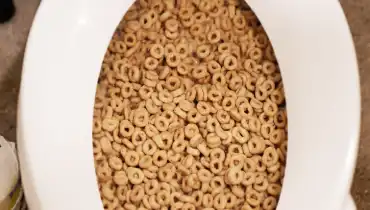Just about everyone has got his or her own perception involving Think Twice Before Flushing Food Down Your Toilet.

Introduction
Lots of people are usually confronted with the predicament of what to do with food waste, especially when it comes to leftovers or scraps. One typical concern that occurs is whether it's alright to flush food down the bathroom. In this write-up, we'll look into the reasons that individuals may think about purging food, the consequences of doing so, and different techniques for proper disposal.
Reasons why individuals may consider purging food
Absence of understanding
Some people might not know the potential injury caused by purging food down the bathroom. They might wrongly believe that it's a safe method.
Comfort
Flushing food down the commode may seem like a quick and very easy service to taking care of undesirable scraps, specifically when there's no nearby trash can readily available.
Laziness
Sometimes, individuals may merely choose to flush food out of sheer idleness, without considering the effects of their actions.
Effects of flushing food down the bathroom
Environmental effect
Food waste that winds up in rivers can contribute to contamination and damage marine communities. Furthermore, the water used to purge food can strain water resources.
Pipes issues
Flushing food can cause stopped up pipelines and drains, creating expensive plumbing repairs and aggravations.
Types of food that must not be purged
Fibrous foods
Foods with coarse textures such as celery or corn husks can obtain tangled in pipes and trigger blockages.
Starchy foods
Starchy foods like pasta and rice can absorb water and swell, leading to blockages in pipes.
Oils and fats
Greasy foods like bacon or cooking oils should never ever be flushed down the toilet as they can strengthen and cause blockages.
Correct disposal approaches for food waste
Using a waste disposal unit
For homes geared up with garbage disposals, food scraps can be ground up and flushed through the pipes system. However, not all foods appropriate for disposal in this way.
Recycling
Particular food packaging materials can be reused, decreasing waste and decreasing ecological effect.
Composting
Composting is an eco-friendly way to get rid of food waste. Organic products can be composted and made use of to improve dirt for gardening.
The importance of appropriate waste administration
Lowering ecological harm
Correct waste monitoring methods, such as composting and recycling, assistance decrease contamination and protect natural resources for future generations.
Securing plumbing systems
By avoiding the technique of flushing food down the commode, house owners can avoid expensive plumbing repair work and maintain the stability of their plumbing systems.
Verdict
In conclusion, while it may be appealing to flush food down the toilet for benefit, it is very important to understand the prospective effects of this action. By embracing correct waste administration techniques and throwing away food waste responsibly, individuals can contribute to much healthier plumbing systems and a cleaner setting for all.
FLUSH FOOD DOWN THE TOILET?
FLUSHING FOOD CAN CAUSE BLOCKED DRAINS IN YOUR HOME
All of the plumbing fixtures in your home are connected to the same sewer pipe outside of your home. This outdoor sewer pipe is responsible for transporting all the wastewater from your home to the Council sewer mains. Even small pieces of food that go down the kitchen sink can cause problems for your sewer. It should therefore be obvious that flushing larger bits of food, such as meat, risks a clog in either the toilet itself or the sewer pipes. Flushing greasy food is even more problematic because oil coagulates when it cools, coating the interior lining of your pipes.
THE TOILET IS NOT A BIN
Food isn’t the only thing that people shouldn’t be flushing down the toilet. People use the toilet to dispose of all kinds of things such as tampons, makeup wipes, dental floss, kitty litter and even underwear. Water goes to great lengths to educate residents about the high costs and stress placed on wastewater treatment systems simply from people flushing the wrong stuff down the toilet. It costs taxpayers millions of dollars each year, and homeowners thousands in blocked drain repairs.
FLUSHING FOOD IS A WASTE OF WATER
Flushing food is a waste of our most precious resource - water. In June this year Level 1 water restrictions were introduced to protect water supply from drought conditions. Much of New South Wales continues to be affected by prolonged drought with recent figures revealing up to 97 per cent of the state remains in drought. Depending on whether you have a single or dual flush toilet, every single flush uses between five and 11 litres of water. In the current climate this is a huge amount of water to be wasting on flushing food that should be placed in the bin (or better yet, the compost).
https://www.jabplumbingsolutions.com.au/blog/can-you-flush-food-down-the-toilet

Do you enjoy more info about ? Make feedback directly below. We would be glad to see your views about this entry. In hopes to see you back again soon. Sharing is good. Helping others is fun. Thank you for going through it.
Schedule Estimate